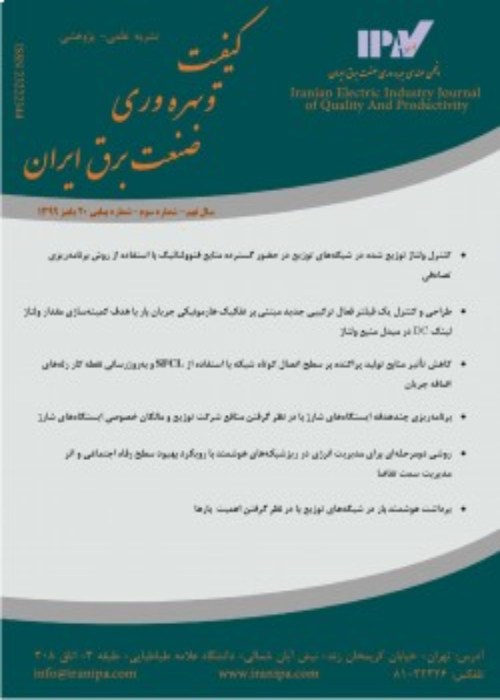Double phase fault location in microgrids with the presence of electric vehicles and Distributed parameters line model
Nowadays, renewable energy is increasingly used in smart grids and microgrids to reduce the use of fossil fuels and improve network efficiency. Like all power system devices, microgrids are subject to transient and steady-state faults, such as short circuits. These faults impair reliability and consumer dissatisfaction. To accurately, automatically, and economically determine the location of a fault, a robust fault location method is needed to stabilize and repair the damaged part of the network. Given the access to the data of all nodes, the fault in these networks can be located based on the data on the two terminals. Accordingly, this paper proposes a method for determining fault distance and faulty section in the island and grid-connected microgrids. The proposed method uses distributed parameters line model and calculates the location of double-phase faults in the microgrid based on voltage and current data on both sides of each section, taking renewable energies and electric vehicles into account. At first, the measurement devices receive and store the current and voltage data at the beginning and end of each section. If a fault occurs, the fault distance is determined by calculating the difference between voltages and currents on both sides of the fault. According to the sampling rate, many voltage and current samples are obtained during the fault. The proposed method calculates a fault distance for each sample. As a result, many fault distances are obtained. These calculations are done for all sections. In the next step, the distances obtained for each section are plotted on the coordinate axis, and a curve is obtained for each section. Among the curves obtained, one curve has a global minimum, which indicates the faulty section. Other curves are ascending or descending. In addition, the global minimum point indicates the calculated distance of the fault from the beginning of the section. This method is not sensitive to electric vehicle models and distributed generation sources and uses only less than half-cycle data to execute the algorithm. The performance of the method is investigated with the simulation of a 9-bus microgrid in MATLAB/SIMULINK. The effects of changes in line parameters (two scenarios), different fault locations, fault resistance (0, 25, and 50 Ω), fault inception angles (36, 90, 180, and 270 degrees), different DGs operation modes (three scenarios), and measurements error (±3%) are studied. The maximum and minimum errors of this method are obtained to be 0.97% and 0.02%, respectively. The results indicate the high accuracy of the proposed method compared to other fault location methods.
- حق عضویت دریافتی صرف حمایت از نشریات عضو و نگهداری، تکمیل و توسعه مگیران میشود.
- پرداخت حق اشتراک و دانلود مقالات اجازه بازنشر آن در سایر رسانههای چاپی و دیجیتال را به کاربر نمیدهد.




